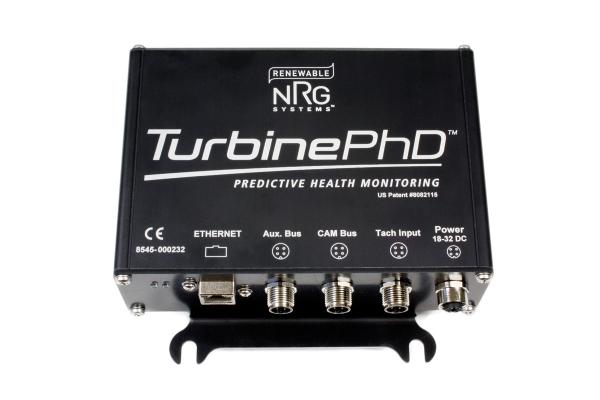
Renewable NRG Systems’ TurbinePhD is a vibration-based condition-monitoring system for wind turbines that provides automated data analysis to detect component faults early on and reduce maintenance costs.
Unscheduled maintenance and turbine downtime are costly issues in the wind industry. Condition monitoring systems, or CMS, have provided one answer to help detect damage or component failures in turbine machinery often before they become serious problems. While wind-farm owners once considered CMS as a nice advantage, these systems are now becoming a necessity as wind turbines grow in size and in number, making unplanned maintenance an even greater challenge.
“Condition monitoring is slowly transitioning from a nice-to-have to a must-have,” says Brogan Morton, Product Manager at Renewable NRG Systems, a manufacturer of measurement equipment for the renewable industry. “It has taken some time, but I think falling CMS prices, increased up-tower repair options, and more turbines coming off warranty is driving this decision.” Morton says that CMS once cost in excess of $10,000, making them an expensive investment for some turbine owners. “But now you can get industry leading systems for under $5,000,” he adds.
Morton believes that as OEMs gain more experience with CMS, these systems will become an integral part of the turbine design cycle. “What better tool to identify component weaknesses early in a turbine’s life and increase the lead time it takes to eliminate them?” he asks.
Although monitoring doesn’t automatically increase the life of a turbine or have the ability to fix faulty components, it does provide information to make better maintenance decisions. By identifying faults early on, operators can pick an up-tower repair option that drastically reduces maintenance and material costs. Morton provides the example of replacing a part of the gearbox (such as a bearing) versus the entire unit, which could even help eliminate the expense of a crane callout.
“CMS have already become more automated, meaning that it take fewer resources to monitor turbines today. Reducing analysis time even more so will only increase in the future and potentially reduce even further maintenance costs,” he says.

Sentient Science’s GBX System-level Powerflow is a condition-monitoring software that illustrates the full components of a gearbox at work, letting users click on the individual parts to understand their life.
Stephen Steen, the Head of Industrial Internet Solutions at third-party solution provider Sentient Science, agrees, and says that originally O&M was performed on a set schedule, called planned preventative maintenance or PPM. “PPM was like changing the oil in your car every 3,000 miles, but that never accounted for the current condition of your car.” He says condition-monitoring tools let operators better understand the current health and condition of each turbine on a wind farm.
“Prognostics are the new and fastest growing capabilities for wind-turbine condition monitoring, and they fall into two categories: Big-data prognostics and model-based prognostics,” he says. Big data requires collecting large amounts of failure and diagnostic data, such vibration and heat signatures, to identify trends and extrapolate those trends into future failure rates. Model-based prognostics uses physics-based models to predict failure rates of specific turbines in their operating conditions. It can also run and evaluate trade-off studies of life extension possibilities.
“Model-based prognostics let operators perform ‘what if’ scenarios of new gearbox upgrades, lubricant changes, and methods of re-rating the turbines to maximize each asset’s ROI.” Steen says prognostics can reduce O&M costs by an additional 15%, and saves 90% for each additional up-tower component replacement over down-tower replacements. “This means that a component, usually a bearing, can be replaced up-tower before it causes damage to other components and potentially catastrophic failure of the gearbox.” If a company replaces two bearings, for instance, and a planetary-stage failure occurs in the months after, this can be a $100,000 of wasted investment, according to Steen.
Essentially, condition-based monitoring lets operators catch failures as they occur, thereby minimizing downtime and costs associated with running turbines to catastrophic failure. “But today we have the ability to use prognostics to complement CMS by predicting failures before they occur, so turbine owners can pre-plan and budget for turbine gearbox and up-tower component replacements,” he says.
Sentient Science
http://sentientscience.com
Renewable NRG Systems
www.renewablenrgsystems.com
Filed Under: Uncategorized

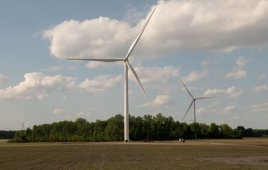
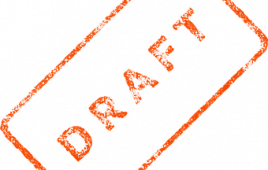
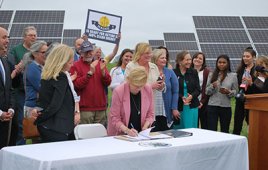
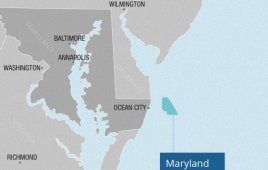
Condition Based Monitoring as basis for Condition Based Maintenance is a natural evolution offering a clear ROI. We ran a program in the Saudi Arabian oil and gas production, marketed as VABS Vibration Analysis and Balancing Systems, way back in the early 80ies. Nowadays with much better/faster computer capacity, the analysis capabilities have improved a lot and the cost has come down. I’d say it is now a must have.